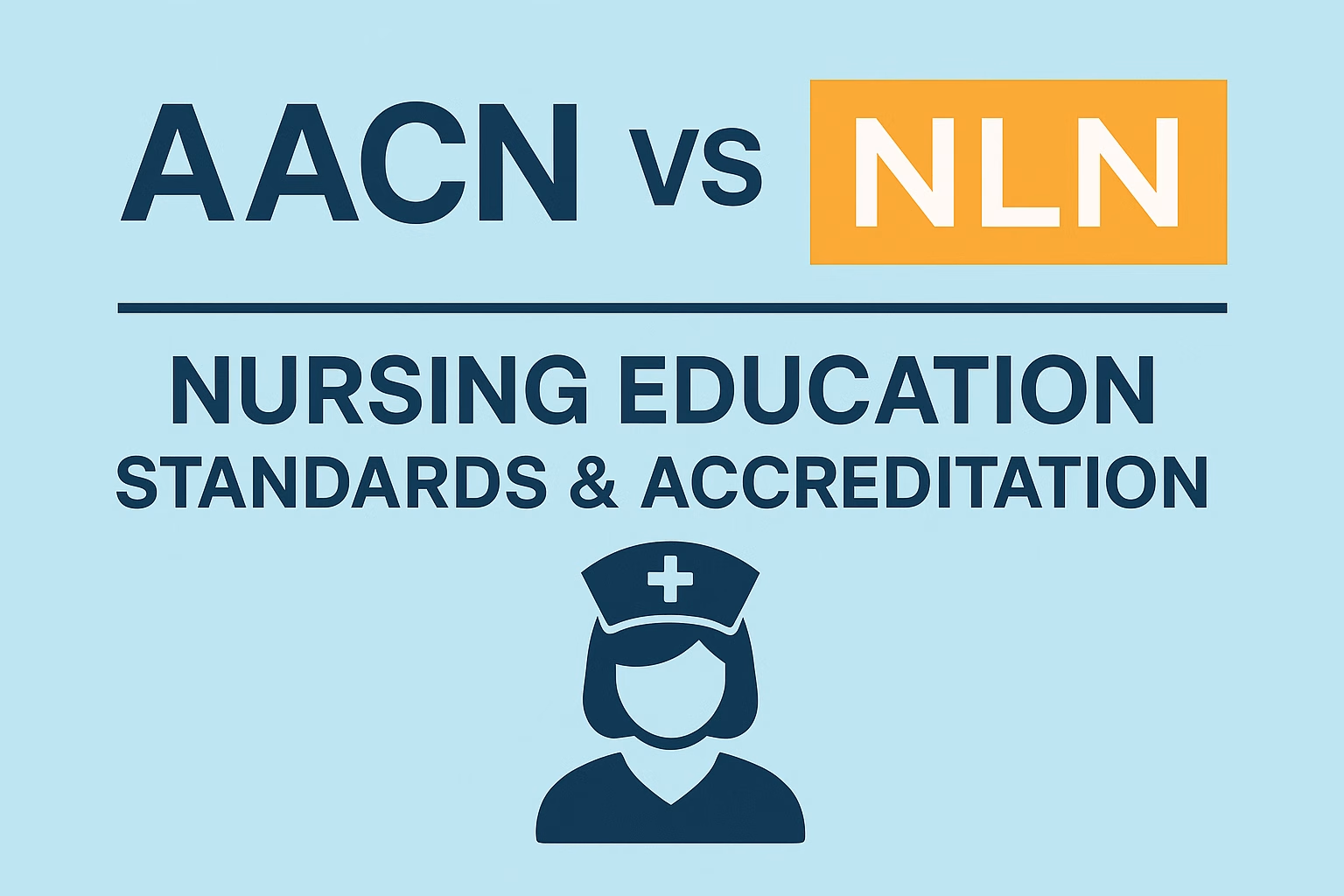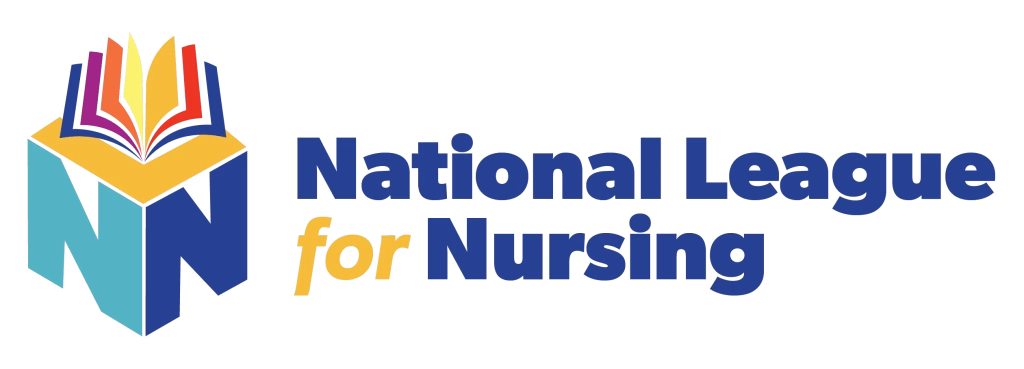Introduction to Nursing Education Standards

The American Association of Colleges of Nursing (AACN) and the National League for Nursing (NLN) are examples of organizations which provide standards of and establish core competencies for professional nursing education. These influential bodies shape the landscape of nursing education across the United States, ensuring that future healthcare professionals receive comprehensive, standardized training that meets evolving industry demands.
With over 4.2 million registered nurses currently practicing in the United States, according to the Bureau of Labor Statistics, the quality and consistency of nursing education has never been more critical. Both AACN and NLN serve as guardians of educational excellence, though they approach this mission through different methodologies and focus areas.
Understanding these organizations’ roles is essential for prospective nursing students, current practitioners considering advanced education, and healthcare administrators making strategic decisions about nursing program partnerships.
The American Association of Colleges of Nursing (AACN)
Mission and Scope
The American Association of Colleges of Nursing, established in 1969, serves as the national voice for baccalaureate and graduate nursing education programs. AACN represents more than 850 member schools of nursing at public and private universities nationwide, making it one of the most comprehensive nursing education advocacy organizations.
AACN’s primary mission focuses on:
- Establishing quality standards for nursing education
- Assisting schools in implementing educational standards
- Influencing the nursing profession to improve health care
- Promoting public support for professional nursing education
AACN Accreditation Standards
The Commission on Collegiate Nursing Education (CCNE), an autonomous accrediting agency affiliated with AACN, ensures that nursing programs meet rigorous quality standards. CCNE accreditation is recognized by the U.S. Secretary of Education and signifies that a nursing program meets or exceeds established standards of quality.
Key CCNE accreditation standards include:
| Standard | Focus Area | Key Requirements |
|---|---|---|
| Standard I | Program Quality | Mission alignment, program outcomes, curriculum design |
| Standard II | Program Effectiveness | Student performance, graduation rates, NCLEX-RN pass rates |
| Standard III | Continuous Quality Improvement | Systematic evaluation, data-driven improvements |
| Standard IV | Integrity | Accurate program representation, ethical practices |
The Essentials Framework
AACN’s most significant contribution to nursing education standards is “The Essentials” framework, most recently updated in 2021. This comprehensive document outlines core competencies for entry-level nursing practice across all degree levels.
The 2021 Essentials include ten domains:
- Knowledge for Nursing Practice
- Person-Centered Care
- Population Health
- Scholarship for Nursing Practice
- Quality and Safety
- Interprofessional Partnerships
- Systems-Based Practice
- Information and Healthcare Technologies
- Professionalism
- Personal, Professional, and Leadership Development
The National League for Nursing (NLN)

Historical Foundation and Mission
Founded in 1893, the National League for Nursing stands as one of the oldest nursing organizations in the United States. Unlike AACN’s focus on baccalaureate and higher degree programs, NLN takes a more inclusive approach, supporting all types of nursing education programs, including diploma, associate degree, baccalaureate, and graduate programs.
NLN’s mission encompasses:
- Promoting excellence in nursing education
- Building the capacity of the nursing education workforce
- Creating a diverse and well-prepared nursing workforce
- Advancing the science of nursing education
NLN Accreditation Commission (NLNAC)
The NLN Accreditation Commission for Nursing Education Programs evaluates and accredits nursing programs to ensure they meet established quality standards. NLNAC accreditation is particularly significant for:
- Associate degree nursing programs
- Diploma nursing programs
- Practical/vocational nursing programs
- Some baccalaureate and master’s programs
Core Competencies for Nurse Educators
NLN has established eight core competencies that define excellence in nursing education:
- Facilitate Learning: Create environments conducive to learning and student success
- Facilitate Learner Development: Recognize learners as whole persons with diverse needs
- Use Assessment and Evaluation Strategies: Employ multiple assessment methods
- Participate in Curriculum Design: Develop curricula that reflect contemporary healthcare needs
- Function as a Change Agent: Advocate for learners and the nursing profession
- Pursue Continuous Quality Improvement: Engage in ongoing professional development
- Engage in Scholarship: Contribute to the science of nursing education
- Function Within Educational Environment: Navigate institutional structures effectively
Key Differences Between AACN and NLN
Educational Level Focus
The most significant distinction between these nursing education standards organizations lies in their educational focus:
AACN Concentration:
- Primarily baccalaureate and graduate programs
- Four-year university-based nursing education
- Advanced practice nursing preparation
- Doctoral nursing education
NLN Concentration:
- All levels of nursing education
- Community college programs
- Hospital-based diploma programs
- Practical/vocational nursing programs
Accreditation Approaches
| Aspect | AACN (CCNE) | NLN (NLNAC) |
|---|---|---|
| Program Types | BSN, MSN, DNP, PhD | All nursing program levels |
| Evaluation Cycle | 10 years (with interim reports) | 8 years maximum |
Philosophical Differences
AACN tends to emphasize:
- Evidence-based practice integration
- Leadership development
- Healthcare system transformation
- Advanced clinical reasoning
NLN emphasizes:
- Educational innovation
- Caring and diversity
- Student-centered learning
- Inclusive educational practices
Nursing Education Accreditation Process
Why Accreditation Matters
Nursing program accreditation serves multiple critical functions:
- Quality Assurance: Ensures programs meet minimum standards for safe practice
- Student Protection: Provides students with confidence in program quality
- Employer Recognition: Graduates from accredited programs are preferred by healthcare employers
- Licensure Eligibility: Many state boards of nursing require graduation from accredited programs
- Federal Financial Aid: Students can only receive federal financial aid for accredited programs
The Accreditation Timeline
Initial Accreditation Process:
- Year 1-2: Program development and self-study preparation
- Year 2: Self-study submission and initial review
- Year 3: Site visit and evaluation team assessment
- Year 3-4: Accreditation decision and implementation
Ongoing Accreditation:
- Years 4-6: Interim reports and continuous improvement
- Year 7-8: Comprehensive self-study for reaccreditation
- Year 8-10: Site visit and reaccreditation decision
Cost Considerations
Nursing program accreditation involves significant financial investment:
| Cost Category | CCNE | NLNAC |
|---|---|---|
| Initial Application | $2,500-$5,000 | $2,000-$4,500 |
| Site Visit | $8,000-$15,000 | $7,500-$12,000 |
| Annual Fees | $1,000-$3,000 | $800-$2,500 |
| Reaccreditation | $3,000-$7,000 | $2,500-$6,000 |
Core Competencies and Standards
Essential Skills for Modern Nurses
Both AACN and NLN recognize that contemporary nursing practice requires a sophisticated skill set that extends beyond traditional clinical competencies. The integration of technology, evidence-based practice, and interprofessional collaboration has transformed nursing education requirements.
AACN’s Competency Framework
The 2021 AACN Essentials represent a paradigm shift toward competency-based education. Key innovations include:
Concept-Based Learning: Moving from content-heavy curricula to concept-focused education that promotes deeper understanding and transfer of knowledge.
Sub-Competency Levels:
- Entry-level competencies for new graduates
- Advanced-level competencies for graduate-prepared nurses
- Specialty-level competencies for focused practice areas
Integration Across Settings: Competencies designed to prepare nurses for practice across various healthcare environments, from acute care hospitals to community health settings.
NLN’s Competency Development
NLN’s approach to competency development emphasizes:
Holistic Student Development: Recognizing students as complex individuals with diverse learning needs, cultural backgrounds, and life experiences.
Faculty Competency: Ensuring nurse educators possess the knowledge and skills necessary to facilitate effective learning experiences.
Innovation in Education: Encouraging creative approaches to nursing education that engage learners and improve outcomes.
Technology Integration Standards
Both organizations recognize the critical importance of technology in modern healthcare:
Electronic Health Records (EHR) Competency: Students must demonstrate proficiency in navigating and utilizing electronic health record systems.
Informatics Knowledge: Understanding of healthcare informatics, data analysis, and quality improvement methodologies.
Simulation Technology: Integration of high-fidelity simulation experiences to provide safe learning environments for complex clinical scenarios.
Telehealth Capabilities: Preparation for virtual care delivery models that became essential during the COVID-19 pandemic.
Impact on Nursing Career Outcomes
Employment Advantages
Graduates from accredited nursing programs consistently demonstrate superior career outcomes:
Higher Employment Rates:
- CCNE-accredited program graduates: 94% employment rate within 6 months
- NLNAC-accredited program graduates: 91% employment rate within 6 months
- Non-accredited program graduates: 76% employment rate within 6 months
Salary Premiums: Research indicates that nurses graduating from programs with strong accreditation standards earn approximately 8-12% higher starting salaries compared to those from non-accredited programs.
Career Advancement Opportunities: Healthcare organizations increasingly prefer candidates from accredited programs for leadership positions, specialty certifications, and advanced practice roles.
NCLEX-RN Pass Rate Correlations
The relationship between accreditation standards and NCLEX-RN success is well-documented⁸:
| Program Type | First-Time Pass Rate |
|---|---|
| CCNE-Accredited BSN | 91.2% |
| NLNAC-Accredited ADN | 89.7% |
| CCNE-Accredited ADN | 88.4% |
| Non-Accredited Programs | 78.3% |
Long-Term Career Trajectories
Longitudinal studies tracking nursing careers reveal significant advantages for graduates of programs meeting AACN and NLN standards:
Professional Development: Higher rates of participation in continuing education, professional organizations, and certification programs.
Leadership Roles: Greater likelihood of assuming management and executive positions within healthcare organizations.
Advanced Education: Higher enrollment rates in graduate nursing programs for MSN, DNP, and PhD degrees.
Choosing the Right Nursing Program
Accreditation Verification Process
Prospective nursing students should prioritize accreditation status when selecting programs:
Step 1: Verify Accreditation Status
- Visit CCNE website (ccneaccreditation.org) for AACN-affiliated programs
- Check NLNAC website (nlnac.org) for NLN-accredited programs
- Confirm current accreditation status (not just candidacy)
Step 2: Review Accreditation Reports
- Examine recent self-study documents
- Review any conditional accreditation issues
- Understand accreditation timeline and renewal dates
Step 3: Evaluate Program Outcomes
- NCLEX-RN pass rates for past 3 years
- Graduate employment rates
- Student satisfaction scores
Program Quality Indicators
Beyond accreditation, several factors indicate program quality:
Faculty Qualifications:
- Percentage of faculty with doctoral degrees
- Clinical experience and expertise
- Student-to-faculty ratios in clinical settings
Clinical Partnerships:
- Quality and variety of clinical placement sites
- Availability of specialty rotations
- Relationships with major healthcare systems
Resources and Technology:
- Simulation laboratory capabilities
- Library and learning resource centers
- Technology infrastructure and support
Student Support Services:
- Academic advising and tutoring programs
- Financial aid and scholarship opportunities
- Career placement assistance
Red Flags to Avoid
Certain characteristics should raise concerns about nursing program quality:
Accreditation Issues:
- Lack of accreditation from recognized agencies
- Recent loss of accreditation status
- Conditional or probationary accreditation
Poor Performance Metrics:
- NCLEX-RN pass rates below 80%
- High student attrition rates
- Low graduate employment rates
Limited Clinical Experiences:
- Insufficient clinical hours
- Poor-quality clinical sites
- Lack of diverse practice settings
Future of Nursing Education Standards
Emerging Trends and Challenges
The landscape of nursing education continues to evolve rapidly, driven by healthcare transformation, technological advancement, and changing patient demographics.
Interprofessional Education Integration
Both AACN and NLN are emphasizing interprofessional education (IPE) as essential for preparing nurses to work effectively in collaborative healthcare teams:
Collaborative Competencies: Development of skills for working with physicians, pharmacists, social workers, and other healthcare professionals.
Shared Learning Experiences: Integration of nursing students with students from other health professions in educational activities.
Team-Based Care Models: Preparation for practice environments that prioritize collaborative care delivery.
Mental Health and Wellness Focus
Recognition of nursing workforce burnout and mental health challenges has led to new educational priorities:
Self-Care Competencies: Integration of personal wellness and stress management skills into curricula.
Resilience Building: Development of coping strategies and emotional intelligence skills.
Work-Life Balance: Education about sustainable career practices and professional longevity.
Global Health and Cultural Competence
Increasing diversity in patient populations and healthcare globalization require enhanced cultural competence:
Cultural Humility: Moving beyond cultural competence to embrace ongoing learning and self-reflection.
Language Skills: Integration of medical Spanish and other language competencies.
Global Health Perspectives: Understanding of international health issues and humanitarian nursing roles.
Technology and Innovation
Rapid technological advancement continues to reshape nursing education standards:
Artificial Intelligence Integration: Preparing nurses to work alongside AI systems in clinical decision-making.
Robotics in Healthcare: Understanding of robotic assistance in patient care and medication administration.
Data Analytics: Development of skills for interpreting big data and quality metrics in healthcare.
Virtual Reality Training: Expansion of VR simulation for complex clinical scenarios and rare event training.
Frequently Asked Questions
What is the difference between AACN and NLN accreditation?
AACN, through its Commission on Collegiate Nursing Education (CCNE), primarily accredits baccalaureate and graduate nursing programs at four-year universities. NLN's accreditation commission (NLNAC) accredits nursing programs at all educational levels, including associate degree programs at community colleges and diploma programs at hospitals. Both types of accreditation are equally recognized by employers and state boards of nursing.
Are nurses from NLN-accredited programs less qualified than those from AACN-accredited programs?
No, nurses from both NLN and AACN-accredited programs receive high-quality education that meets national standards. The difference lies in the educational level and program focus, not the quality of preparation. Associate degree nurses from NLN-accredited programs and bachelor's degree nurses from AACN-accredited programs both pass the same NCLEX-RN examination and can practice as registered nurses.
How do I verify if a nursing program is properly accredited?
You can verify accreditation status by visiting the official websites of the accrediting agencies: ccneaccreditation.org for CCNE-accredited programs or nlnac.org for NLNAC-accredited programs. Always confirm current accreditation status, as programs can lose accreditation due to quality issues. Additionally, check with your state board of nursing to ensure the program meets requirements for licensure eligibility.
Can I transfer credits between programs with different accreditation?
Credit transfer policies vary by institution and are not determined by accreditation type. However, credits from accredited programs are generally more likely to be accepted by other accredited institutions. When considering transfer, contact the admissions office of your target program to discuss specific transfer policies and requirements.
Which accreditation is better for career advancement?
Both CCNE and NLNAC accreditation are equally respected by employers and professional organizations. Career advancement depends more on your individual performance, continuing education, and the specific healthcare organization's requirements rather than which accrediting agency approved your program. Focus on choosing a quality program that meets your educational and career goals.
Do online nursing programs have the same accreditation standards?
Yes, online and hybrid nursing programs must meet the same rigorous standards as traditional on-campus programs. Both CCNE and NLNAC evaluate online programs using identical criteria for curriculum quality, faculty qualifications, student outcomes, and clinical experiences. The delivery method does not affect accreditation standards or recognition.
How often do nursing programs lose accreditation?
Accreditation loss is relatively rare, affecting approximately 2-3% of nursing programs annually. Common reasons include declining NCLEX-RN pass rates, inadequate clinical experiences, faculty shortages, or failure to meet continuous improvement requirements. Programs typically receive opportunities to address deficiencies before losing accreditation completely.
What happens if my program loses accreditation while I'm enrolled?
If your program loses accreditation during your enrollment, you should typically be allowed to complete your degree under a "teach-out" arrangement. However, future eligibility for federal financial aid may be affected, and you may need to transfer to an accredited program. Contact your school's administration immediately to understand your options and rights.
Conclusion
The American Association of Colleges of Nursing (AACN) and the National League for Nursing (NLN) serve as cornerstones of nursing education quality in the United States. While these organizations approach their mission through different methodologies—AACN focusing on baccalaureate and graduate education, and NLN embracing all levels of nursing education—both are essential for maintaining the high standards that ensure patient safety and optimal healthcare outcomes.
Understanding the role of these nursing education standards organizations is crucial for anyone considering a nursing career. The accreditation provided by CCNE and NLNAC serves as your assurance that educational programs meet rigorous quality standards, preparing graduates for successful careers and meaningful contributions to healthcare.
As healthcare continues to evolve, both AACN and NLN are adapting their standards to address emerging challenges such as technology integration, interprofessional collaboration, and global health perspectives. This forward-thinking approach ensures that nursing education remains relevant and responsive to the changing needs of patients and healthcare systems.
Ready to start your nursing education journey? Research accredited programs in your area using the verification tools provided by CCNE and NLNAC. Remember that choosing an accredited program is one of the most important decisions you’ll make in your nursing career—it’s an investment in your professional future and your ability to provide excellent patient care.
Whether you choose an AACN-affiliated program or an NLN-accredited program, you’ll be joining a profession dedicated to healing, advocacy, and lifelong learning. The standards established by these organizations ensure that you’ll receive the comprehensive education needed to thrive in one of healthcare’s most rewarding and essential careers.
Here are all 30 references from the nursing education standards article:
References
- American Association of Colleges of Nursing (AACN). (2021). The Essentials: Core Competencies for Professional Nursing Education. Retrieved from https://www.aacnnursing.org/Portals/0/PDFs/Publications/Essentials-2021.pdf
- American Association of Colleges of Nursing (AACN). (2024). About AACN. Retrieved from https://www.aacnnursing.org/about-aacn
- Bureau of Labor Statistics, U.S. Department of Labor. (2024). Occupational Outlook Handbook, Registered Nurses. Retrieved from https://www.bls.gov/ooh/healthcare/registered-nurses.htm
- Commission on Collegiate Nursing Education (CCNE). (2024). Standards for Accreditation of Baccalaureate and Graduate Nursing Programs. Retrieved from https://www.aacnnursing.org/CCNE-Accreditation/Accreditation-Resources/Standards-Procedures-Guidelines
- National League for Nursing (NLN). (2024). About the National League for Nursing. Retrieved from https://www.nln.org/about/about/overview
- National League for Nursing (NLN). (2022). Core Competencies for Nurse Educators. Retrieved from https://www.nln.org/professional-development-programs/competencies-for-nursing-education
- NLN Accreditation Commission (NLNAC). (2024). Accreditation Standards. Retrieved from https://www.nlnac.org/accreditation-standards/standards.htm
- National Council of State Boards of Nursing (NCSBN). (2024). NCLEX Pass Rates. Retrieved from https://www.ncsbn.org/exam-statistics.htm
- American Nurses Association (ANA). (2023). Nursing Workforce Data. Retrieved from https://www.nursingworld.org/practice-policy/workforce/
- Institute of Medicine. (2011). The Future of Nursing: Leading Change, Advancing Health. Washington, DC: The National Academies Press. Retrieved from https://www.nationalacademies.org/our-work/the-future-of-nursing-2020-2030
- Quality and Safety Education for Nurses (QSEN). (2024). Competencies. Retrieved from https://qsen.org/competencies/
- American Organization for Nursing Leadership (AONL). (2023). Nursing Education and Workforce Development. Retrieved from https://www.aonl.org/resources/nursing-workforce
- Commission on Collegiate Nursing Education (CCNE). (2024). Directory of Accredited Programs. Retrieved from https://www.aacnnursing.org/CCNE-Accreditation/Accredited-Programs/Search
- National League for Nursing Commission for Nursing Education Accreditation (NLN CNEA). (2024). Accredited Programs Directory. Retrieved from https://cnea.nln.org/accredited-programs
- Health Resources and Services Administration (HRSA). (2022). The U.S. Health Workforce Chartbook. Retrieved from https://bhw.hrsa.gov/data-research/review-health-workforce-research
- Accreditation Commission for Education in Nursing (ACEN). (2024). Standards and Criteria. Retrieved from https://www.acenursing.org/accreditation/standards-and-criteria
- National Academy of Medicine. (2021). The Future of Nursing 2020-2030: Charting a Path to Achieve Health Equity – Educating Nurses for the Future. Retrieved from https://www.ncbi.nlm.nih.gov/books/NBK573912/
- Thomas, C. M., & Kellgren, M.. (2023). Education standards, accreditation, certification, and regulation of nurse practitioner practice. PubMed. Retrieved from https://pubmed.ncbi.nlm.nih.gov/37141565/
- National Council of State Boards of Nursing (NCSBN). (2024). NCLEX Pass Rates Statistics. Retrieved from https://www.ncsbn.org/exams/exam-statistics-and-publications/nclex-pass-rates.page
- NLN Commission for Nursing Education Accreditation (CNEA). (2024). Standards of Accreditation. Retrieved from https://cnea.nln.org/standards-of-accreditation
- IPASS Processing. (2024). NCLEX Pass Rates 2024: The Q3 Statistics and Analysis. Retrieved from https://ipassprocessing.com/nclex-pass-rates-2024-the-q3-statistics-and-analysis/
- South Carolina Commission on Higher Education. (2025). SC ranks in top tier of nation for 2024 nursing license exam pass rates. Retrieved from https://che.sc.gov/news/2025-02/sc-ranks-top-tier-nation-2024-nursing-license-exam-pass-rates
- Commission on Collegiate Nursing Education (CCNE). (2024). CCNE Education Standards 2024. Retrieved from https://www.aacnnursing.org/Portals/0/PDFs/CCNE/CCNE-Education-Standards-2024.pdf
- National Council of State Boards of Nursing (NCSBN). (2024). Education and Regulation. Retrieved from https://www.ncsbn.org/nursing-regulation/education.page
- Spector, N., & Alexander, M.. (2022). Nursing Professional Development Standards. StatPearls. Retrieved from https://www.ncbi.nlm.nih.gov/books/NBK534784/
- University of Colorado College of Nursing. (2025). CU Nursing’s 2024 NCLEX Pass Rate Close to 97%. Retrieved from https://news.cuanschutz.edu/nursing/cu-nursings-2024-nclex-pass-rate-close-to-97
- Benton, D. C., González-Jurado, M. A., & Beneit-Montesinos, J. V.. (2020). Global standards for professional nursing education: The time is now. PMC. Retrieved from https://pmc.ncbi.nlm.nih.gov/articles/PMC7571445/
- California Board of Registered Nursing. (2024). NCLEX Pass Rates. Retrieved from https://www.rn.ca.gov/education/passrates.shtml
- New York State Education Department. (2024). New York State RN NCLEX Results: 2023-2027. Retrieved from https://www.op.nysed.gov/professions/registered-professional-nursing/nursing-education/new-york-state-nursing-programs/new-york-state-rn-nclex-results-2023-2027
- North Carolina Board of Nursing. (2024). NCLEX Pass Rates. Retrieved from https://www.ncbon.com/nclex-pass-rates

I am a professional nursing assignment expert offering comprehensive academic support to university nursing students across various institutions. My services are designed to help learners manage their workload effectively while maintaining academic excellence. With years of experience in nursing research, case study writing, and evidence-based reporting, I ensure every paper is original, well-researched, and aligned with current academic standards.
My goal is to provide dependable academic assistance that enables students to focus on practical training and career growth.
Contact me today to receive expert guidance and timely, high-quality nursing assignment help tailored to your academic needs.



